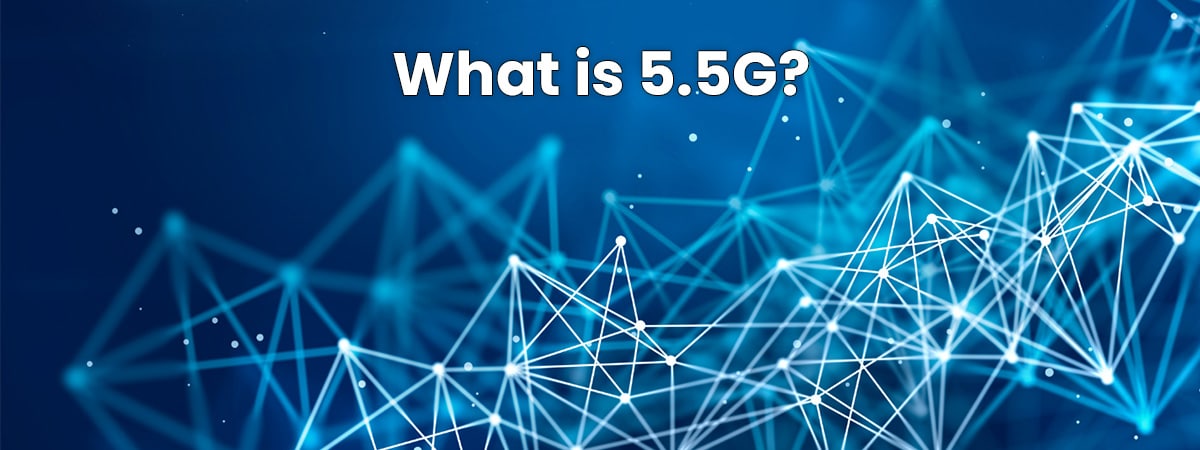At the 2022 Global Mobile Broadband Forum “5.5G and 2030 Smart World” media round table held recently, Alex Sinclair, chief technology officer of GSMA (Global System for Mobile Communications), said that according to the 3GPP standard rhythm, 5.5G is expected to enter commercial use in 2024. stage.
It hasn’t been a long time since everyone’s 5G mobile phones were replaced. Is 5.5G coming soon? What is 5.5G and how is it different from 5G?
10x speed boost
At the above forum, GSMA Chief Technology Officer Alex Sinclair emphasized that the intergenerational life cycle of recent generations of mobile communication networks is generally 10 years, and there will be a watershed around the fifth year. 2.5G, 3.5G and 4.5G are all It has brought about significantly enhanced performance, significantly improved network management efficiency, and significantly reduced energy consumption. 5.5G will also play the same role.
“5.5G is the result of the natural evolution of mobile communication technology.” Walid Mathlouthi, director of the Future Network and Spectrum Management Division of the International Telecommunication Union (ITU), believes that uplink and downlink speed, coverage, and delay are the three major indicators to measure the quality of mobile communication networks. , 5.5G will undoubtedly be greatly improved on the basis of 5G.
Uplink and downlink speed, coverage, and delay are the three major indicators to measure the quality of mobile communication networks. 5.5G will undoubtedly be greatly improved on the basis of 5G. Walid Mathlouthi emphasized that in the development stage of 5G-oriented 5.5G in the field of mobile communication, the spectrum will be a very important aspect. Ultra-high bandwidth spectrum issuance and full uplink spectrum usage are topics of common concern in the global industry chain. All parties in the industry need to work together to conduct in-depth discussions and collaboration in the network, ecology, business, and other aspects to promote the healthy and sustainable development of the industry.
The above point of view has been agreed upon by Gao Quanzhong, general manager of Huawei 5.5G. Gao Quanzhong said that wireless technology needs to continue to evolve on the basis of 5G to meet the needs of the development of an intelligent society in the next 5-10 years. As an upgraded version of 5G, 5.5G’s iconic capabilities of downlinking 10G, uplinking gigabit, 100 billion connections, and endogenous intelligence will become the backbone supporting the development of the digital economy. Gao Quanzhong believes that downlinking 10Gbps and millisecond-level delay will build a bridge between the virtual world and the real world, enabling the scale development of the MR, XR, and metaverse industries. To sum up, 5.5G will continue to enhance its capabilities compared to 5G, such as a 10-fold increase in network speed, and new IoT and perception capabilities.
How 5.5G is different from 5G
What we call 5G refers to the fifth-generation mobile communication technology, which is a new generation of broadband mobile communication technology with high speed, low latency, and large connection. The 5G peak theoretical transmission speed can reach 20Gbps, about 2.5GB per second, which is more than 10 times faster than the 4G network transmission speed. For example, a 1G movie can be downloaded in 4 seconds.
According to data from the Ministry of Industry and Information Technology, as of the end of September, the total number of mobile phone users of the three basic telecommunications companies reached 1.682 billion, a net increase of 38.95 million over the end of the previous year. Among them, the number of 5G mobile phone users reached 510 million, a net increase of 155 million over the end of the previous year, accounting for 30.3% of the mobile phone users, an increase of 8.7 percentage points over the end of the previous year.
According to reports, 5.5G (5G-Advanced) is the transition and connection between 5G and 6G, which will probably last for more than 5 years.
Industry experts point out that mobile communication technology is almost a generation every ten years. But because technology is developing so fast, the technical difference between integer generation and integer generation is too great. At this time, it is necessary to name the technology in the intermediate stage to show the difference between the previous generation and the offspring.
This kind of gameplay started as early as 2/3G. GPRS was once called 2.5G, between 2GGSM and 3GUMTS. Between 3G and 4G, there is an even more outrageous 3.75G. Before 5G was born, the industry also had names such as 4.5G and pre5G. In fact, the essence of 5.5G is 5G advanced.
There are two main missions of 5.5G: one is to correct and strengthen the deficiencies of 5G; the other is to explore the latest direction for the future development of 6G according to the development and changes of the industry.
5.5G is the technological evolution of 5G. On the basis of 5G ubiquitous gigabit experience and tens of billions of connections, 5.5G will further upgrade the indicators to a ubiquitous 10-gigabit experience and 100 billion connections.
Specifically, 5.5G will achieve peak rates of downlink 10 gigabit (10Gbps) and uplink gigabit (1Gbps), as well as millisecond-level delay and low-cost 100 billion IoT. In the future, a 5.5G millisecond-level delay can support real-time interaction and create an “immersive” immersive experience. Cloud VR (virtual reality) live broadcasts, VR dual 8K ultra-high-definition live broadcasts, digital and intelligent competition, etc. are expected to come into reality, and the audience can watch the event in a “parallel scene”; at the same time, 5.5G supports more comprehensive support with a faster uplink transmission rate The Internet of Things capabilities can meet the upload requirements of machine vision and massive broadband Internet of Things in scenarios such as enterprise production and manufacturing.
